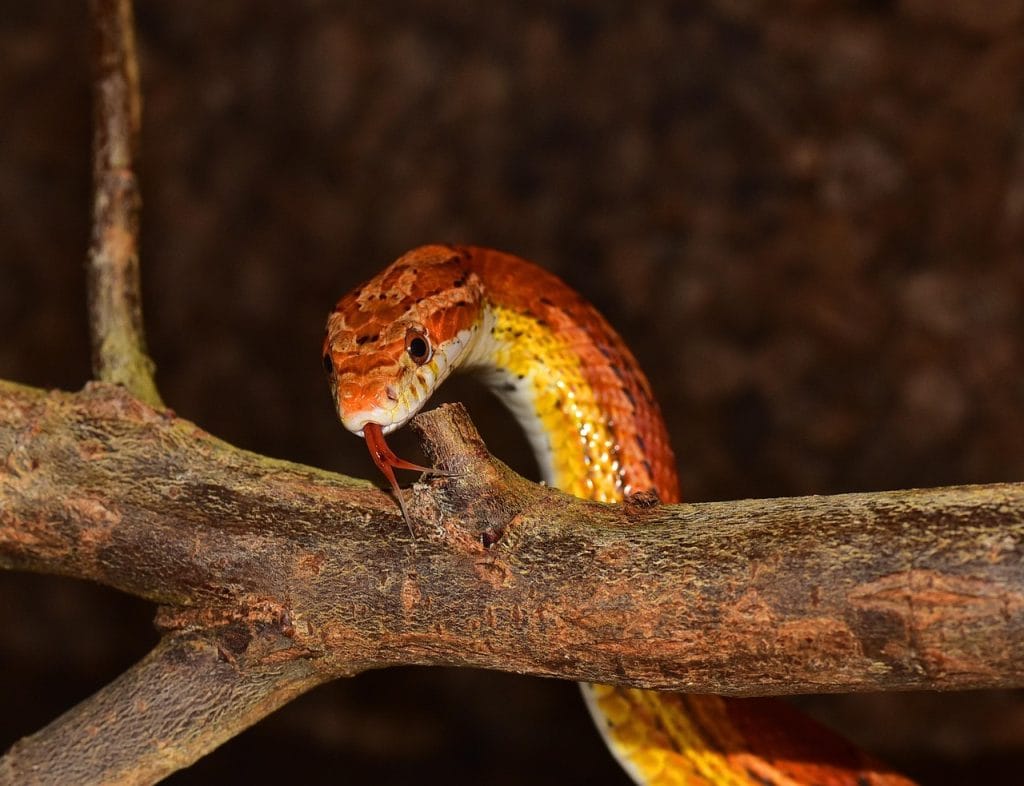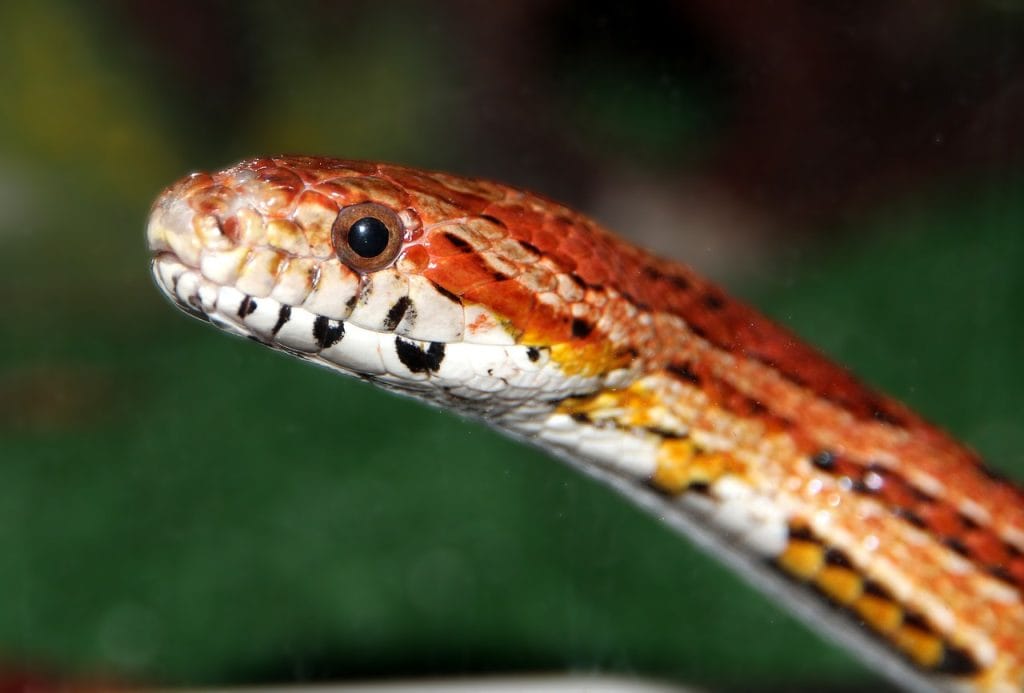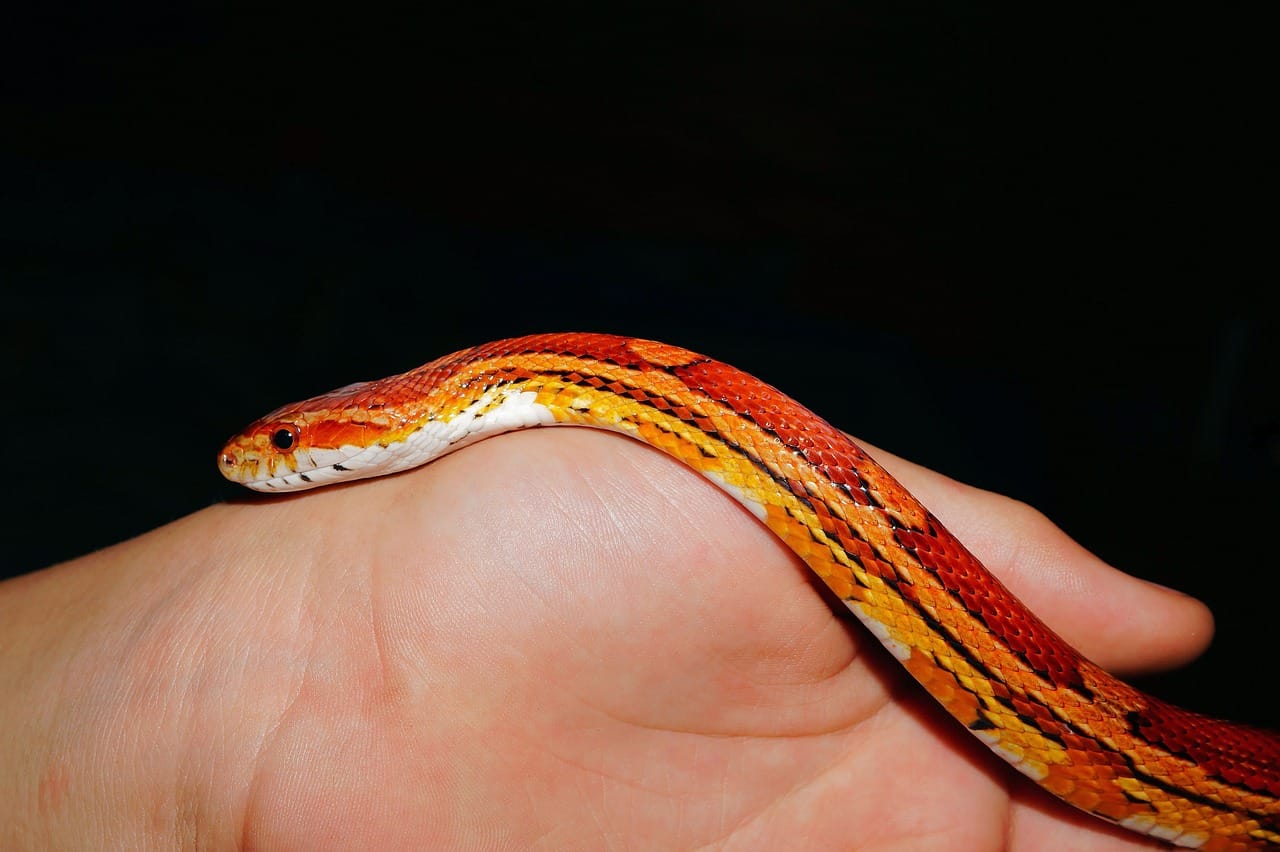- Corn Snake Care
- Corn Snake Tank Setup
- Temperature and Humidity for Great Corn Snake Care
- Cleaning and Light
- Enrichment and Décor
- Can You Handle Corn Snakes?
- What is Corn Snake Life Expectancy?
- What Are Common Corn Snake Health Problems?
- General Preventative Corn Snake Care
Welcome to the world of corn snakes—a fascinating and delightful pet choice for reptile enthusiasts! If you’re considering diving into corn snake care or you’re already a proud snake parent, this article is for you. Let’s embark on this exciting journey together, with all the important insights you need!
Corn Snake Care
Understanding the background and natural habitat of corn snakes can enhance your care efforts. Native to the southeastern United States, these snakes are often found in overgrown fields, forest openings, and barns.
Corn Snake appearance
Corn snakes are admired for their beautiful coloration, which mimics the appearance of Indian corn, leading to their name. They display a range of morphs—different color and pattern combinations—making each snake uniquely beautiful. Their slender bodies allow them to move with exceptional grace.
Are corn snake dangerous

Corn snakes are known for their calm and non-aggressive temperament. They’re curious and enjoy exploring their environment, which is why it’s beneficial to provide them with enrichment activities like ropes or branches.
Diet and Feeding Habits for Corn Snake
In the wild, corn snakes prey on small rodents, birds, and even amphibians. In captivity, their diet consists primarily of appropriately-sized rodents like mice. Offering pre-killed, frozen-thawed mice is generally recommended to prevent injury to your snake.
Feeding Schedule: Juveniles require feeding once every 5 to 7 days, while adults can be fed every 7 to 10 days. Monitoring your snake’s weight and adjusting the feeding schedule ensures they maintain a healthy condition.
Water
One often overlooked aspect of corn snake care is the provision of water. It’s not just about hydration; water plays a crucial role in your snake’s overall well-being.
Importance of Water
Corn snakes need a steady supply of fresh, clean water. This helps them stay hydrated, aids in digestion, and is essential for shedding. A sturdy water bowl is necessary, usually one that’s stable enough to prevent tipping over.
Placement and Maintenance
Place the water bowl on the cooler side of the tank to prevent excess evaporation. Change the water daily to maintain cleanliness. Every week, thoroughly clean the bowl with a reptile-safe solution to prevent bacterial build-up that could affect your snake’s health.
Hydration and Shedding
Proper hydration is particularly important during shedding. Ensuring your snake has access to soak will help ease the shedding process. This is when providing a larger bowl for them to immerse themselves can be beneficial.
Corn Snake Tank Setup

Designing an appropriate enclosure for your corn snake is vital for its health and happiness. Let’s delve into creating an ideal habitat.
Choosing the Right Tank
A 20-gallon long tank is suitable for a juvenile corn snake. However, as they grow into adulthood, you’ll want to upgrade to at least a 40-gallon tank to provide ample space for movement and exploration. Make sure the tank has a secure, escape-proof lid.
Substrate Options
When selecting a substrate, think of how it mimics their natural environment while ensuring it’s safe:
Aspen Shavings: Popular due to its natural look and absorptive qualities.
Paper Towels or Butcher Paper: These are cost-effective, easy to clean choices, especially for juveniles.
Reptile Carpet: Reusable option, though it requires regular cleaning to prevent bacterial build-up.
Temperature and Humidity for Great Corn Snake Care
Maintaining proper temperature and humidity is crucial for your snake’s well-being, affecting their digestion, shedding, and overall health.
Temperature Zones
Basking Spot: Ensure a warm area at 85°F, easily achieved with a ceramic heat emitter or under-tank heater.
Cool Side: Keep this area around 75°F. This provides your snake the opportunity to thermoregulate by moving between the two zones.
Nighttime Temperature: At night, temperatures can safely drop to 65–70°F without causing issues, reflecting a natural day-night temperature fluctuation.
Humidity Levels
Corn snakes thrive in humidity levels maintained between 40% to 50%. To achieve these:
Mist the Tank Lightly: Quick sprays with a water bottle can help maintain adequate humidity.
Provide a Humidity Hide: A hide filled with damp moss offers a higher humidity retreat, especially useful during shedding.
Cleaning and Light

Keeping the enclosure clean and well-lit contributes to your snake’s overall health and happiness.
Cleaning Routine
Spot Clean: Conduct this task a few times a week by removing waste and any uneaten food promptly.
Deep Clean: Monthly, replace the substrate and scrub the enclosure components with a reptile-safe disinfectant.
Lighting Schemes
While corn snakes do not strictly require UVB lighting, providing a 12-hour light cycle mimics their natural environment. A timer can ensure consistency, helping to regulate your snake’s activity patterns.
Enrichment and Décor
To stimulate natural behaviors and keep your corn snake engaged:
Include Hides: At least one on the warm side and one on the cool side.
Climbing Opportunities: Branches or vines encourage exercise and exploration.
Substrate to Burrow: Depth in the substrate allows them to exhibit natural burrowing behavior.
Can You Handle Corn Snakes?
Absolutely! Handling is great for bonding, but it’s important to do so confidently and gently.
When to Start Handling
After first bringing your corn snake home, give it a week or two undisturbed to acclimate to its new environment. Begin handling gradually to build trust and confidence.
Techniques for Handling
Be Gentle and Confident: Support their body fully and avoid quick movements to prevent startling them.
Sessions: Start with brief sessions, around 5–10 minutes, gradually increasing as your snake becomes more relaxed.
Frequency: Handle them once or twice a week at most to maintain familiarity without causing stress.
Benefits of Handling
Regular handling aids in socializing your snake, making them more accustomed to human interaction. It also allows for regular health checks, such as assessing for skin or health issues.
What is Corn Snake Life Expectancy?

As a caretaker, you’ll likely be in for a long-term commitment. These snakes can live comfortably between 15 to 20 years in captivity, with some even reaching 25 years. This longevity emphasizes the joy of developing a deep bond over the years with your slithery companion. It’s why investing in their care and environment is so rewarding.
What Are Common Corn Snake Health Problems?
While corn snakes are generally robust, certain health issues aren’t uncommon.
Shedding Problems (Dysecdysis)
Shedding becomes problematic mostly due to improper humidity levels. Signs include retained or incomplete skin sheds, especially around the eyes (eye caps). If you notice this, a soak in lukewarm water can assist in loosening any remaining skin.
Respiratory Infections
Symptoms include wheezing, mucus around the nostrils, and labored breathing. These are usually the result of incorrect temperatures or humidity. Ensuring proper habitat conditions is crucial, and if signs of infection persist, consulting a vet is vital.
External Parasites
Mites or ticks can occasionally trouble corn snakes, appearing as tiny moving spots on their skin. A thorough tank cleaning and a vet-approved treatment are needed if these parasites are detected.
Mouth Rot (Stomatitis)
Watch for swollen or discolored tissue around the mouth. It’s generally caused by bacterial infections and requires immediate veterinary intervention.
General Preventative Corn Snake Care
- Regularly clean the enclosure and ensure proper habitat conditions.
- Ensure a balanced diet to prevent obesity or malnutrition.
- Monitor for changes in behavior or appetite, as these can signal health issues.
- Routine veterinary check-ups, ideally with a vet experienced in reptiles, help catch potential problems early and ensure your snake remains in peak health.
Caring for a corn snake is a rewarding experience. With the right care and attention to their environment, you’ll enjoy many enriching years with your unique reptile companion. Whether you’re a new owner or a seasoned enthusiast, the captivating charm of corn snakes is sure to make the journey worthwhile!

Leave a Reply
You must be logged in to post a comment.